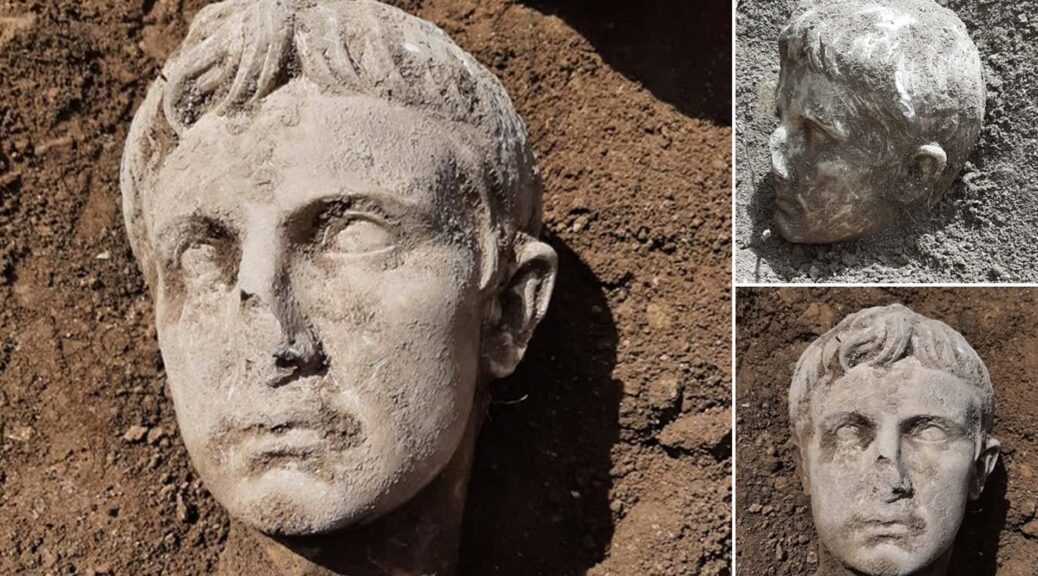Marble Head of Augustus Unearthed in Southern Italy
Artnews reports that a marble head of the Roman emperor Augustus (r. 27 B.C.–A.D. 14) was unearthed in southern Italy’s region of Molise by a team of researchers led by archaeologist Francesca Giancola.
The sculpture, which has lost its body and nose was discovered while renovating Isernia’s historic city walls – built during the imperial Rome period.
It was identified as Augustus, adopted son of Julius Caesar and Rome’s first emperor, by its distinctive facial features and hairstyle. The bust is not rare as dozens of statues, busts and coins of Augustus have been discovered from Roman times.
But researchers say the discovery proves the Romans’ presence in the ancient colony, known at the time as Aesernia, which once held strategic importance as a gateway to the rest of Italy.
The marble head, which is in fairly good condition, was discovered along the Via Occidentale by a construction crew last Thursday.

No definitive date for the sculpture has been announced but the depiction in line with the Augustus of Primaporta, a well-known marble statue of the emperor dating to 20 BC.
Archaeologists are confident it is Augustus, due to his iconic ‘swallow-tail hairstyle – thick strands of hair parted in a distinctive V-shape, with protruding ears and broadly spaced locks, isNews reports.
‘Yes, it is really him, the emperor Augustus, found today during the excavation,’ the Archaeological Superintendency of Molise wrote on Facebook.
Augustus was always presented as clean-shaven and, though he lived to 76, as a man in his late teens or early 20s.
He ruled Rome from 27 B.C. until his death in 14 A.D, overseeing the expansion of the empire into Egypt and other parts of Africa and establishing both a standing army and the Praetorian Guard.
In 295 BC, Rome wrested control of Isernia away from the Samnites, an ancient Italic people in south-central Italy.
Key to access to the rest of the country, the town briefly fell back into the Samnites’ hands in 90 BC, before reverting to Roman authority a few years later.
Roman forces levelled most of the city and rebuilt it as a Roman outpost, with both Caesar and Augustus trying to establish colonies there. Isernia’s ancient city walls, some of which were constructed under imperial Rome, are in serious need of repair.
The marble head was discovered after part of one wall collapsed, according to ANSA. But suggestions to reinforce them with concrete pillars have been met with criticism.
‘[That] solution was not feasible, not in the least because the piling would have risked destroying the foundation of the walls and any traces of ancient presence in the area,’ superintendent Dora Catalano and archaeologist Maria Diletta Colombo told isNews.
Instead, they’re looking for a less invasive way to strengthen the walls without disturbing their artistic and historical value.
According to isNews, the head will eventually go on display at Isernia’s Museum of Santa Maria Delle Monache.
